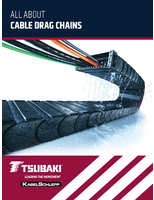Barix IP Audio Devices Gain Popularity in Radio and TV EAS Applications
Share:
ZURICH, Switzerland, April 12 // -- Barix AG, a pioneer in IP-based audio, intercom and control/monitoring, continues to establish its presence in the broadcast industry with its range of low-cost, high- performance IP devices. Radio engineers worldwide are using Barix Instreamer audio encoding and Exstreamer audio decoding devices for studio-to-transmitter (STL) connectivity, remote pick-up applications, and Internet radio broadcasting. Barix broadcast customers have also adapted these devices and the Barix Annuncicom IP intercom for EAS applications, including the first known use of Barix products in television.
EAS (Emergency Alert System) allows broadcasters to send and receive emergency information quickly and automatically, even from unmanned facilities. The FCC requires all U.S. radio and TV broadcast stations to install and maintain EAS encoding and decoding equipment, and operate required weekly and monthly EAS tests.
CTC Media Group, which operates four AM stations in North Carolina, began using Instreamer and Exstreamer devices for EAS in response to its experiences with failing equipment. "Many traditional EAS manufacturers have gone out of business or no longer service the units, and broadcasters can receive hefty fines if the units aren't operating correctly," said Mike Afflerbach, General Manager, CTC Media Group.
Afflerbach, who had been using the Instreamer and Exstreamer for STL platforms, designed a plan for EAS that would increase reliability and lower equipment expenses. An Instreamer at the studio connects to the output of an existing EAS system and sends audio to the Instreamer, which relays the audio directly to the Exstreamer devices at the transmitter sites. The priority port in each Exstreamer sends the EAS signal to the transmitters for broadcast over the air, and the EAS Instreamer immediately shuts down following the EAS broadcast.
"This setup essentially means that one Instreamer can run EAS applications on any number of stations in a given market," said Afflerbach. "The Instreamer allows me to initiate and monitor my EAS applications from a single studio location for all four of our stations. Traditionally, I would need these EAS decoders and numerous receivers at each studio or transmitter site, which incrementally raises equipment and maintenance costs."
Rob Hopkins, president and CEO of Open Broadcaster in the Yukon Territory of Canada, uses Barix for streaming EAS information to three transmitter sites in Whitehorse, Tagish and Haines Junction as part of his Barix Instreamer/Exstreamer STL platform. According to Hopkins, the devices offer a reliable continuous audio stream in a region with extremely harsh weather conditions that often make transmitter sites, which regularly experience power outages, difficult to reach. This reliability provides an excellent means for communicating emergency information to area residents.
Open Broadcaster is an open source software solution created by Hopkins to run radio stations and audio services in remote regions.
"Since operators are rarely at these stations, the Barix equipment is programmed to prioritize emergency broadcast information over the main audio stream in the event of power outages, fires and weather-related emergency situations," said Hopkins. "The announcement can be uploaded using the Open Broadcaster software, and the Barix priority port immediately recognizes the EAS stream."
Clear Channel Television in New York state operates a multi-station centralcasting configuration. The station group uses the Annuncicom IP intercom to pass EAS signals from its stations in Binghamton, Elmira and Watertown, to its Syracuse hub. Jeff Hartman, Engineering Project Manager for Clear Channel Television, Northeast Region, discovered the Annuncicom while investigating a solution to EAS connectivity challenges posed by regional centralcasting.
"In regional centralcasting, the EAS monitoring and encoding equipment is located at the local station where it can be manually controlled and monitor other stations for alerts, and the actual crawl and alert audio insertion must be done at the hub location where the DTV encoders are located," said Hartman. "This requires a means of extending the alert audio and RS232 data for crawl insertion from the local station to the hub. The Barix Annuncicom-100 provides the interconnect functions we need to link the EAS equipment. It's a cost-effective solution and the devices are easy to integrate and make little demand on bandwidth."
http://www.barix.com/
Source: Barix, Inc.
Web site: http://www.barix.com/




